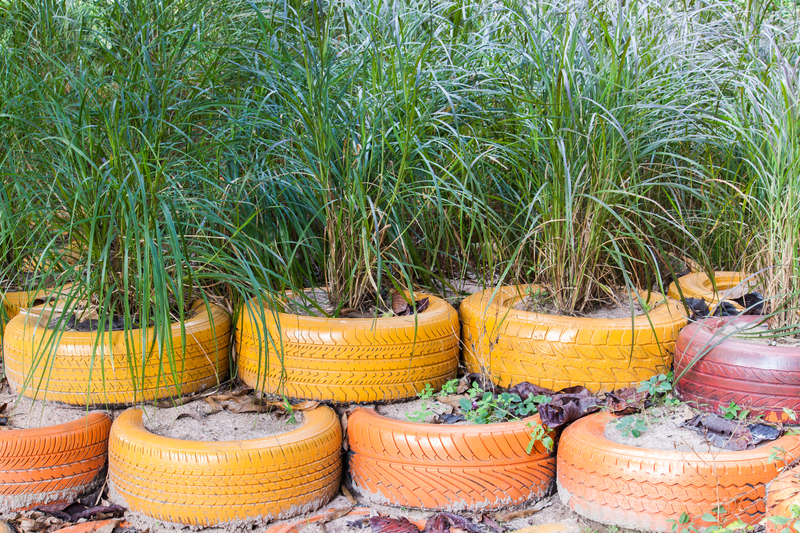Creative and Safe Ideas for PPE Waste Management
The widespread use of Personal Protective Equipment (PPE) like face masks, gloves, face shields, and gowns has been essential for public health, especially since the outbreak of the COVID-19 pandemic. However, the increased demand for single-use PPE has generated an unprecedented volume of waste, significantly impacting our environment. It is essential to develop innovative, safe, and sustainable PPE waste management practices to protect both human health and nature. In this comprehensive guide, we will explore creative and safe PPE waste management ideas to handle the growing challenge of disposable protective equipment responsibly.
Understanding the Importance of PPE Waste Management
Before delving into creative PPE waste management ideas, it is crucial to understand why managing PPE waste is so important:
- Environmental Impact: PPE items like masks and gloves are mostly made from plastics, which can take centuries to degrade. Improper disposal leads to pollution in waterways and contributes to microplastics in the ecosystem.
- Public Health Risk: Used PPE can carry pathogens, posing health risks to sanitation workers and the general public if not disposed of correctly.
- Community Aesthetics: Littered PPE detracts from the beauty of public spaces and can endanger wildlife that mistake it for food or nesting material.
Creative and eco-friendly PPE waste solutions are no longer just options--they are essential for a sustainable future.

Best Practices for Safe PPE Waste Collection
Segregation at the Source
Ensuring the correct separation of PPE waste from regular household or workplace waste is the first step in sustainable PPE management. Here's how you can practice effective segregation:
- Dedicated Bins: Install clearly labeled bins (preferably with biohazard symbols) for PPE waste in public spaces, workplaces, and homes.
- Double-Bagging: In case of potentially contaminated PPE (from healthcare or suspected COVID-19 cases), double-bag the waste to limit exposure.
- Secure Closure: Always seal PPE waste bags properly to prevent spillage.
Awareness and Education Campaigns
One of the most effective strategies for safe PPE waste handling is public education. Local governments, businesses, and NGOs should consider:
- Posters and Signage: Place clear instructions near disposal points to inform people about proper PPE disposal.
- Community Workshops: Host virtual or in-person sessions on the environmental impact of PPE littering and segregating waste.
- Incentive Programs: Reward responsible disposal through community points or small gifts, encouraging people to follow safe protocols.
Innovative PPE Waste Management Solutions
Traditional disposal methods, such as incineration or landfilling, are not always sustainable or environmentally friendly. Thankfully, there are several creative PPE waste management ideas that can help us make a positive change:
PPE Recycling Initiatives
While PPE is made from challenging materials such as polypropylene, advancements in recycling technologies have paved the way for new solutions:
- Mechanical Recycling: Some recycling companies now accept used masks and gloves, processing them into plastic pellets for use in construction or manufacturing new products.
- Specialized Collection Points: Set up specialized PPE collection centers at hospitals, clinics, offices, and major transportation hubs to direct this waste to certified recycling partners.
- Partnerships with Innovators: Forge collaborations with startups working on PPE recycling solutions, such as Terracycle's Zero Waste Box program and other local enterprises.
Upcycling PPE Waste
Upcycling is one of the most creative PPE waste solutions. Here are some unique ways to repurpose used (but unused or uncontaminated) PPE:
- Eco-bricks: Cut and clean disposable face masks, then stuff them into plastic bottles to create sturdy "eco-bricks" for construction or landscaping projects.
- Art Projects: Collaborate with local artists or schools to use clean, unused PPE for sculptures, murals, or awareness installations highlighting the issue of waste.
- Innovative Fabrics: Some designers have begun weaving sanitized mask fibers into sturdy textiles for bags, furniture, or even insulation materials.
Composting Biodegradable PPE
With the growing demand for sustainable alternatives, several companies have begun producing biodegradable and compostable PPE:
- Plant-Based Masks and Gloves: Encourage the use of biodegradable PPE made from bamboo fiber or cornstarch, which can be disposed of in specialized composting facilities.
- On-Site Composting: Promote businesses and large institutions (such as universities or hospitals) to implement on-site composting for biodegradable PPE.
Safety Measures for PPE Waste Management
While focusing on creative solutions, safety should always remain a priority:
- Proper Handling: Individuals and workers handling PPE waste should use gloves, face masks, and follow sanitizing protocols.
- Disinfection: Where feasible, disinfect PPE waste before processing or upcycling by exposing it to sunlight or using approved chemicals.
- Training: Frontline workers and cleaners should be regularly trained on the latest safety techniques and provided with necessary PPE themselves.
Tech Innovations in PPE Waste Management
Automated Sorting Systems
Advanced sorting machines can now separate PPE waste from other recyclables using technologies like:
- AI Vision Systems: Detect and sort face masks and gloves efficiently.
- Robotic Arms: Safely grab and segregate potentially contaminated PPE without human contact.
Blockchain-Based Tracking of PPE Waste
Blockchain platforms are being used to ensure the transparent tracking of PPE waste from collection to disposal, improving compliance with regulations and identifying bottlenecks in the process.
Community-Led PPE Waste Management Programs
PPE Collection Drives
Neighborhood groups or municipalities can organize regular PPE collection drives, providing:
- Mobile Collection Vans: Allowing people to dispose of PPE safely without leaving their homes.
- Awareness Campaigns: Informing the public through social media, local radio, and posters about upcoming drives.
Citizen Science Projects
Enlist citizens to map PPE litter and report environmental hotspots via smartphone apps, enabling local authorities to deploy targeted clean-up operations.
Crafting and Educational Workshops
- Invite students and artisans to explore safe upcycling projects with clean, unused PPE waste, raising both awareness and creativity.
Policy Recommendations for PPE Waste Management
Introducing Regulations and Standards
- Mandatory PPE Recycling: Governments can enact regulations mandating the collection and recycling of certain types of PPE waste (especially in healthcare).
- Producer Responsibility: Hold manufacturers accountable for the end-of-life disposal of their PPE products, encouraging the development of eco-friendlier alternatives.
Innovation Grants and Support
Offer financial incentives for startups and NGOs working on innovative PPE waste management solutions. Encourage research in biodegradable materials and advanced recycling.
Practical Steps Everyone Can Take
- Use Reusable PPE Whenever Safe: Opt for reusable and washable face masks and gloves whenever your situation allows, following proper cleaning protocols.
- Proper Disposal: Never litter used PPE; use designated disposal points or take advantage of local PPE collection programs.
- Support Sustainable PPE Brands: Purchase from companies offering compostable or recyclable PPE options, thereby supporting the circular economy.

Frequently Asked Questions
Can used PPE be recycled?
Yes, certain types of PPE such as masks and face shields made from plastics can be recycled by specialized facilities. However, due to contamination risks, not all municipal recycling programs accept PPE, so check local guidelines or participate in specialized programs.
What should I do if my area does not provide PPE recycling?
If no dedicated PPE recycling exists in your locality, safely bag and seal used PPE and dispose of it with your regular waste to minimize contact with sanitation workers. Advocate for better collection and recycling options by contacting your municipality or local environmental organizations.
Are there biodegradable PPE options available?
Yes, some companies now manufacture biodegradable PPE made from plant-based materials like cornstarch and bamboo fiber. Always check certifications to ensure compostability before purchase.
How can businesses reduce PPE waste?
Businesses can:
- Source reusable and washable PPE wherever possible.
- Set up in-house collection and send waste to recycling/upcycling partners.
- Train staff on proper segregation and disposal practices.
Is burning PPE waste a safe solution?
Incineration is sometimes used in the medical field, but it requires modern, well-maintained equipment and air filters to avoid emitting toxic gases. Wherever possible, prioritize recycling, upcycling, or safe landfill disposal over open burning.
Conclusion: A Greener Future with Creative PPE Waste Solutions
The challenge of PPE waste management requires both creativity and responsible action. By integrating innovative ideas, embracing technology, involving the community, and advocating for supportive policies, we can address the environmental and health risks posed by PPE waste.
Whether you are an individual, business, or policy maker, you have a role in building a safer and more sustainable future. Start today, and be part of the global movement for creative and safe PPE waste management!
- Support recycling and upcycling initiatives
- Stay informed and proactive about safe PPE disposal
- Advocate for eco-friendly PPE alternatives
When everyone works together, even the smallest actions can have a significant positive impact on our planet. Let's rethink, reduce, and repurpose PPE waste--creatively and safely!
